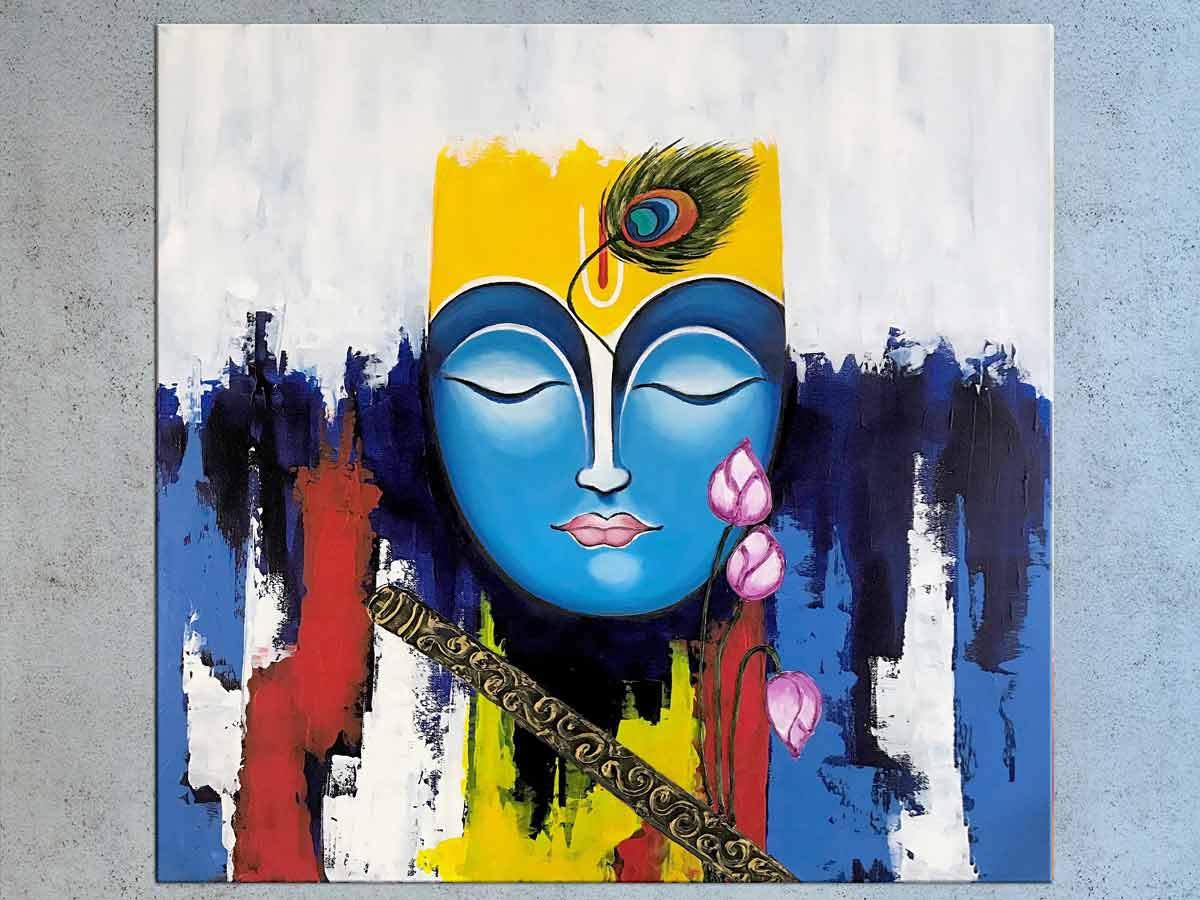India has a highly rich culture and tradition, which are reflected in its incredible crafts and art. Each area and state in India is associated with a certain art form, such as the Pithora Indian painting in Gujarat, the Warli painting in Maharashtra, the Kalamkari painting in Andhra Pradesh, and the Gond art in Madhya Pradesh.
Numerous Indian folk art forms have received widespread recognition and great admiration on a global scale. Through various forms of expression, we honour our deities and mythology, admire our surroundings, nature, flora, and fauna, and convey our feelings, emotions, and thoughts. Here are a few examples of Indian painting styles:
The Madhubani artwork
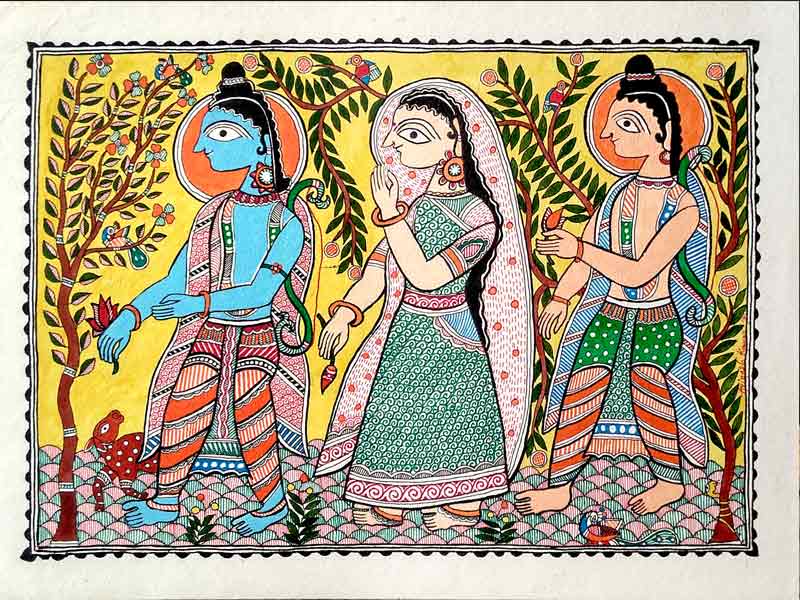
The Madhubani paintings, also known as Mithila paintings, are primarily the work of women and have their origins in the Bihar village of Madhubani. This kind of Indian painting employs a variety of materials, including matchsticks, twigs, fingers, brushes, and nib pens. These are painted on canvases, sacred ground floors, and other surfaces. It is common practice in the Madhubani district of Bihar to create these geometrically patterned, vividly coloured Madhubani paintings. At first, these paintings were created on mud walls and soil floors. They are now also created on handmade paper, linen, and canvases. One of India’s most renowned and well-liked folk art movements is this one.
Phad painting
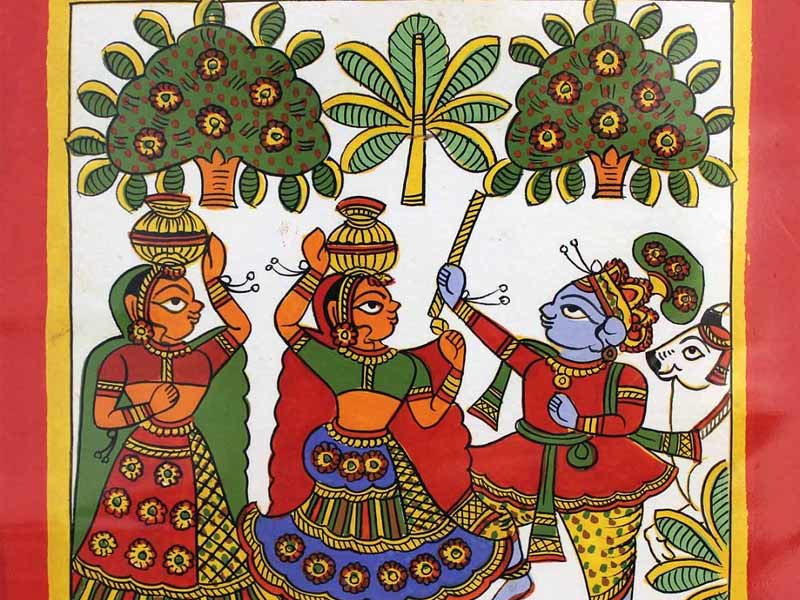
In the Indian state of Rajasthan, this kind of folk painting is practised. Religious scroll painting is known as “Phad painting,” and it is typically executed on a lengthy canvas or piece of fabric with the same name. Phads show Rajasthani folk gods, primarily Pabuji and Devnarayan. The Bhopal, Rajasthani priest-singers of folk deities, carry and perform in front of a Phad, which they use as a mobile temple. It is a tradition of narrative scroll painting where the deities and heroes, such as Prithviraj Chauhan, are shown in mostly red, yellow, and orange hues.
The Kalamkari art form
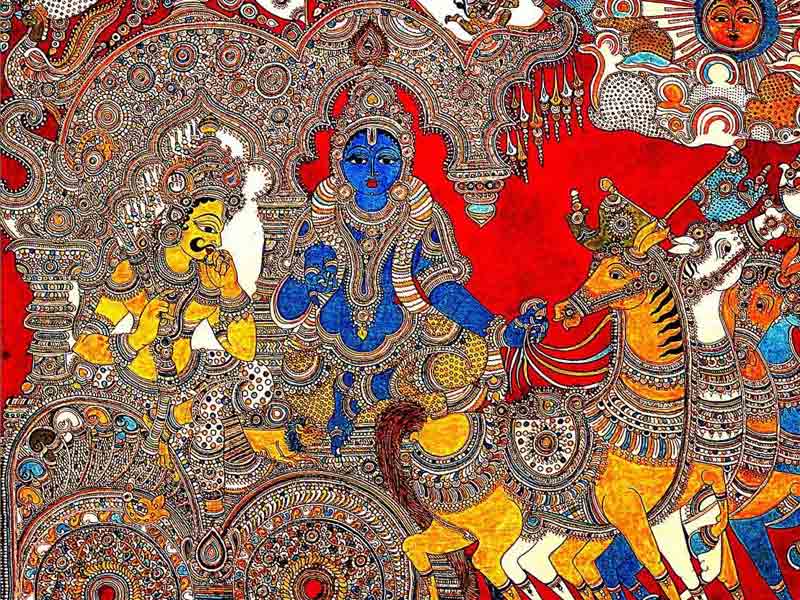
The Kalamkari art form, which derives from the terms “Kalam” (which means pen) and “Kari” (which means handicraft), is used by many families and individuals in Andhra Pradesh and certain communities in Tamil Nadu. The typical imagery seen in Kalamkari includes scenes from Hindu epics like the swastika and the Ramayana, musical instruments, animals, artwork of Buddha and the Buddha, flowers, and scenes from the Mahabharata. The organic hand- or block-printing technique known as kalamkari has been used in Indian folk art for more than three thousand years.
Gond community painting
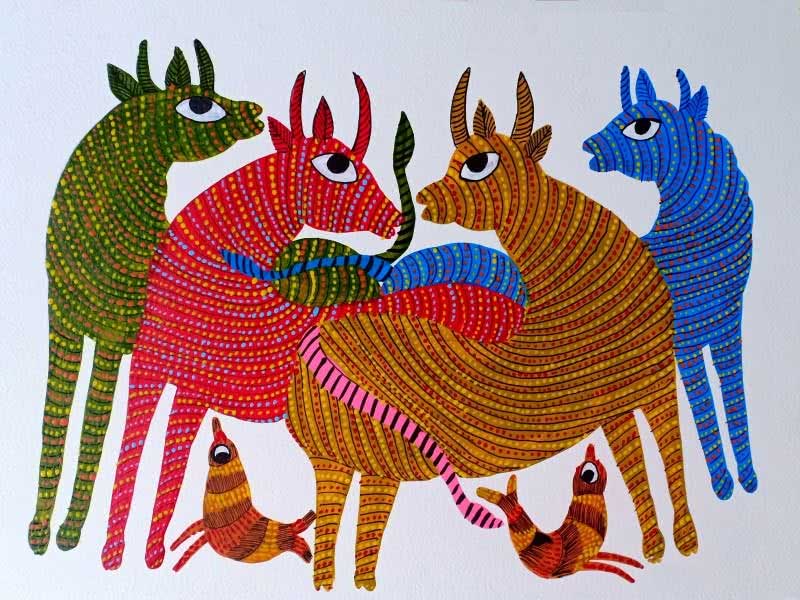
Indian folk and tribal art make up this genre. People from the Gond community in Madhya Pradesh practise them. The word “Gond” is a translation of the Dravidian phrase Kond, which means the green mountain. For more than 1400 years, this art form has been practised. Typically, they show flora and fauna, people going about their daily lives, gods, holidays, and celebrations. They reproduce natural phenomena, historical events, ceremonies, and mythological tales. These paintings are strong, vivid, and colourful with a great deal of meticulous detail.
Patachitra painting

A traditional cloth scroll painting technique from the states of Odisha and West Bengal is called patachitra or Pattachitra.
Also read: The best of the Best: Best of Picasso Paintings
The principal subjects of the art style include mythological and religious themes, epic, Hindu gods, etc. Some of the well-known themes that are represented by the Patachitra art form include Thia Badhia, a representation of the temple of Lord Jagannath, Krishna Lila, an act in which Lord Jagannath as Lord Krishna displays his powers as a child, Dasabatara Patti, which depicts the ten incarnations of Lord Vishnu, and Panchamukhi, which shows Lord Ganesh as a five-headed deity.
Thanjavur painting

Ancient Indian folk art known as Tanjore or Thanjavur painting has its roots in the South Indian town of Thanjavur. It is a traditional form of painting from South India that dates back to the year 1600.
These paintings are well-known for their use of gold foil, which gives the piece a surreal appearance, their use of brilliant colours and semi-precious stones, as well as their colourful panel painting on a wood board with a deity as the main subject. Hindu deities, saints, scenes from Hindu Puranas, Sthala-Puranas, and mythological subjects are among the principal themes of Tanjore paintings.





















